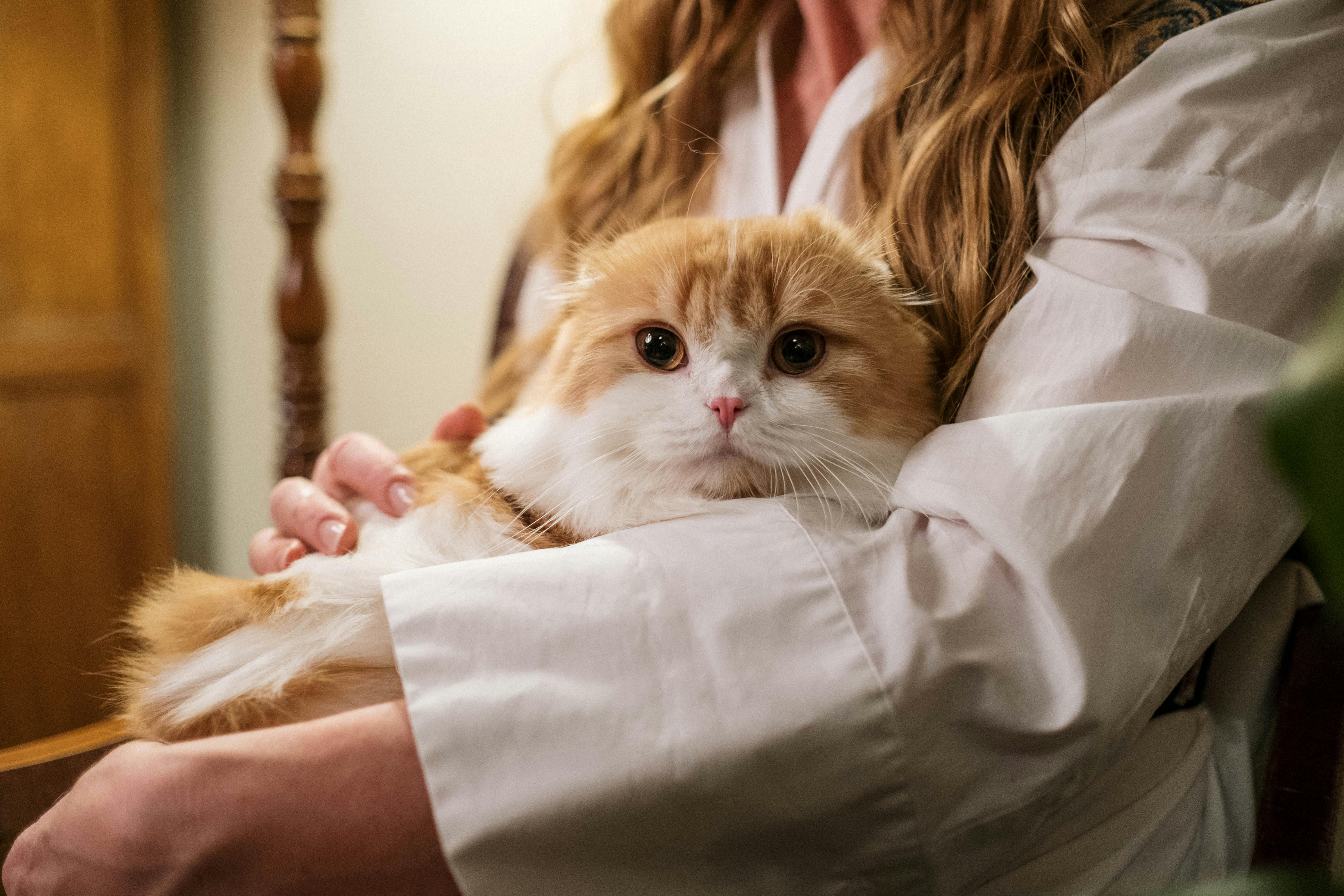What Does Pet Insurance Cover? Expert Guide to Choosing a Policy
Our expert guide on pet insurance will teach you everything you need to know to protect your pets—and your wallet—with the right policy.
Updated:
When you purchase through links on our site, we may earn an affiliate commission. Here's how it works.

If you’ve got a beloved pet, seeing them sick or in pain can be a nightmare come true. Getting them the right care is vital—but the cost can be steep. Getting some great pet insurance can be one way to lessen your worries, as it can cover some or all of the cost of veterinary care. With a set monthly premium cost to pay, it can be easier on your finances than taking a huge hit in one go.
But it can be hard to select a pet insurance policy—whether you’re a new pet owner confused by the options, a devoted pet parent wondering how to protect all your animals efficiently, or simply looking to save money overall.
This guide breaks down the basics of what pet insurance usually covers, the main types of policy, and what can impact the costs so you can start planning the best way to protect your pets.
Short on time? Here are the key takeaways
- Most pet insurance covers vet bills but may also reimburse you for the full value of your pet if it dies. It might cover other costs like third-party liability, too.
- Most insurers only cover cats and dogs, so you may need a specialist provider to insure other pets.
- Research your policy choice carefully. Some policies will have time or expenditure limits or may not cover all conditions.
- Your premium will vary according to your pet’s details, including age, breed, and pre-existing conditions.
- For most people, pet insurance can be a good way to avoid unexpectedly significant costs.
What does pet insurance cover?
Before you invest in pet insurance, it’s important to understand what’s covered. Most pet insurance policies will include some of the following:
Vet fees
Your pet insurance will reimburse you for some or all of your veterinary fees. Most policies cover emergency care, but some may also cover preventative or routine care (such as dental cleanings), dietary check-ups, and specialist care (such as osteopathy or hydrotherapy).
Death of your pet
If your pet passes away, you can claim back its financial value (or what you originally paid for it). This is usually limited to a certain age range—for example, up to 5 years old—as the risk of death rises significantly as a pet gets older. Some pet insurance plans may also cover the cost of euthanasia.
Third-party liability
You may be required to pay compensation if you’re found legally responsible for your pet injuring another person or damaging property. Your pet insurance will cover this cost if your policy includes this option.
Travel and holiday cancellation
If your pet falls ill or is injured right before you go on holiday, forcing you to cancel, your insurance will cover the cost of your trip.
Boarding fees
Your insurance can cover the cost of having your pet looked after—for example, at a boarding kennel—if you go into hospital for an emergency. To meet the cover threshold, you may need to prove that you’re required to stay in hospital for a certain number of days.

What does pet insurance not cover?
You should check your policy carefully for what it doesn’t cover—known as ‘exclusions.’ Common exclusions include:
- Routine care, such as nail-clipping, grooming, flea treatments, and spaying/neutering.
- Dental care. You may be able to add this as an optional extra.
- Pre-existing conditions—illnesses or injuries your pet already had when you took out the insurance policy. You may need to take out a specialist policy if you need cover for these.
- Elective surgery, such as claw removal or ear clipping. These aren’t medically necessary, so they don’t fall under most policies.
- Behavioural issues that need specialist training. Again, you might be able to add this as an extra.
What animals can you cover with pet insurance?
Almost all pet insurance companies in the UK will cover cats and dogs as standard.
Some more specialist providers may also provide cover for:
- Horses
- Birds
- Reptiles (e.g., snakes, tortoises, or lizards)
- Small mammals (e.g., rabbits, hamsters, or gerbils)
Some pets may not be eligible for all forms of insurance, depending on their age, breed, or pre-existing conditions.
Pet insurance policies
There are several policy types you can take out to insure your pets. Here are the 4 most common:
Accident-only cover
Accident-only cover reimburses you for costs incurred through accidental injuries, such as wounds or broken bones, but not illnesses. Usually, you can claim a set amount for each injury, but only for 12 months after the accident.
It’s the most basic and cheapest form of pet insurance. However, due to its limited inclusions, it may not be suitable for everyone, especially if your pets are older and more likely to become injured.
Time-limited cover
Time-limited pet insurance covers injury or illness for a set period—for example, 12 months after it first occurs.
The injury or illness must be new to that pet. After the time limit expires, the condition will be considered pre-existing and may not be covered by the policy. Likewise, recurrences of the same condition within the time limit don’t reset the clock.
This type of pet insurance would work well for short-term illnesses but could be tricky for chronic conditions that require ongoing treatment over several years.
Maximum benefit cover
With maximum benefit pet insurance, you receive a lump sum for each new injury or illness until you reach the cover limit. For example, if your dog has a and you have a £10,000 limit per condition, once your insurance has covered £10,000 in treatments, you would be liable for additional costs after this point. This applies even if you renew your policy.
The advantage of this type of insurance is that you can continue to claim for treatment even after a year has elapsed. However, if it’s an expensive condition, you may eventually face high costs.
Lifetime cover
Lifetime pet insurance cover will reimburse you for the cost of treating new illnesses and injuries up to an annual limit of total cover per year. For example, you could have up to £10,000 to spend on your pet’s treatment from the date your policy starts to 1 year later. The cover limit will refresh when you renew your policy (e.g., annually).
Although this can be the most expensive type of pet insurance, it offers the most comprehensive coverage. It’s especially suitable for individuals whose pets require ongoing care.
What impacts the price of pet insurance?
You’ll usually need to pay a monthly or annual premium fee when you take out or renew your pet insurance policy. The cost of your premium will depend on several factors:
- Your pet’s age: Older pets are more prone to injuries and illnesses, so their insurance tends to be more expensive.
- Type of pet: Dogs tend to be more expensive to insure than cats because of their more active lifestyles and extreme breeding traditions, which can lead to congenital issues. Pedigree pets are usually more expensive for this reason, too. If you have an exotic pet or horse, you may need to pay more for specialist insurance, which tends to be pricier.
- Pre-existing conditions you want to cover: If your pet has pre-existing conditions, you may need to pay more to cover them. Otherwise, you’ll need to pay for this treatment yourself.
- Claims made: Prior claims can push up the price of your insurance, as they suggest that your pet may be susceptible to illness or injury.
- Number of pets: You may be able to insure multiple pets under the same policy, but this will usually be more expensive than covering 1 pet.
- Excess fee: Some policies require you to pay an excess fee when you make a claim. This is usually a lump sum, such as £100. Agreeing to a higher excess can reduce your monthly or annual premium price.
- Vet fee inflation: Veterinary fees have been rising due to the general cost of living, greater expenses for equipment and medicine, and increased demand. In turn, insurers have had to increase their costs to cover the bills.
Alternatives to pet insurance
Here are 2 pet insurance alternatives you can explore:
Self-insurance
Self-insurance means saving money (for example, into a high-interest savings account) rather than paying into an insurance scheme. The goal is to pay for vet fees upfront if something should happen to your pet.
The advantage is that you can set your own savings amount based on what you can afford. If your pet doesn’t end up needing treatment, you can still use your savings for whatever you wish.
The downside is that if your pet were to get into a serious accident or suffer a more complex illness such as cancer, your bills could run into the thousands. You’d need to have a large savings pot to cover these costs.
Charities and other organisations
If you’re unable to meet the cost of vet visits for your pet, certain charities may be able to help. The People’s Dispensary for Sick Animals (PSDA), the Blue Cross, Dogs Trust, and Cats Protection offer some free and low-cost treatment, including routine medical procedures such as spaying and neutering.
However, there are restrictions to eligibility for some of this financial support. For example, you may need to be receiving benefits to qualify. Some services are also available in certain locations only—for example, where a PDSA pet hospital is nearby. Therefore, you might not be able to rely on charity assistance, and it may not cover everything your pet needs.
Final thoughts on pet insurance
Purchasing pet insurance can be a great way to make sure you’re financially prepared for the possibility of your pet falling ill or getting injured. Rather than being faced with a bill of potentially thousands, with a predictable monthly or annual premium cost, you can ensure some or all of your vet bill will be reimbursed.
FAQs
What is usually not covered by pet insurance?
Most pet insurance policies won’t cover pre-existing conditions (injury or illness that started before the policy took effect). Many don’t include routine or preventative care either, but you may be able to add these as an optional extra.
What should I consider when buying pet insurance?
When buying pet insurance, first consider the type of coverage you need. For example, do you want accident-only cover or more peace of mind by including illness, too? Some policies will allow you to add optional extras, which could be useful to cover things like dental care. You should also consider how your pet’s profile (e.g., age, breed, and previous conditions) may impact the premium cost.
Will my pet insurance costs increase over time?
Yes, your pet insurance costs can increase over time. Insurance can become more expensive as your pet ages and becomes more prone to illness. Premium costs can also increase if vet fees in your area go up. Additionally, you may need to pay more if you’ve made prior claims on your pet insurance.
